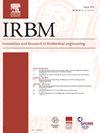Effects of the Printing Angle on the Properties of Titanium Devices Printed by Additive Manufacturing: a Systematic Review
IF 5.6
4区 医学
Q1 ENGINEERING, BIOMEDICAL
引用次数: 0
Abstract
Objectives
The variation of the printing angle of metallic devices induces anisotropy. Thus, to understand the effects of this parameter on as-built samples, this review aimed to answer, “What is the state-of-the-art in the effect of the printing angle of titanium devices printed by additive manufacturing on the material properties?” to identify the best angle for biomedical application through the correlation of microstructural, mechanical properties and roughness.
Material and Methods
The PRISMA 2020 guidelines were followed. The protocol was registered in the Open Science Framework. The search strategy was applied to five databases. The selection process of the articles occurred in two phases by the reviewers independently according to the eligibility criteria, experimental studies that analyzed as-built Ti and its alloy samples printed at different angles characterized by microstructure, mechanical properties, and roughness. In the first, the title and abstract were analyzed. In the second, the articles selected in the first were read in full. The risk of bias was analyzed through a specific tool.
Results
Of the 668 articles found, six met the eligibility criteria. Five metal additive manufacturing techniques with printing angles ranging from 0∘ to 90∘ were evaluated. The microstructure of the samples was consistent with that expected for the alloy and printing technique, with no interference from the angle. For mechanical properties, greater strength was observed at 0∘ for tensile, 90∘ for compression, and Vickers hardness showed no significant differences. For roughness, 0∘ was the most rough. All studies presented a low risk of bias.
Conclusion
The literature evaluated demonstrated that the variation of the printing angle causes the staircase effect that significantly affects the properties of the materials produced. Therefore, the choice of the angle of the biomedical device must be guided by its application, given its strong influence on mechanical performance and consequent durability.
打印角度对增材制造钛器件性能影响的系统综述
目的改变金属器件的印刷角度引起各向异性。因此,为了了解该参数对成品样品的影响,本综述旨在回答,“增材制造打印的钛器件的打印角度对材料性能的影响是什么?”通过微观结构、机械性能和粗糙度的相关性来确定生物医学应用的最佳角度。材料和方法遵循PRISMA 2020指南。该方案已在开放科学框架中注册。将该搜索策略应用于5个数据库。文章的选择过程分为两个阶段,由审稿人根据资格标准独立进行,实验研究分析了在不同角度印刷的Ti及其合金样品的微观结构,力学性能和粗糙度特征。首先,对论文题目和摘要进行了分析。在第二组中,将第一组中选出的文章全文阅读。通过特定的工具分析偏倚风险。结果668篇文献中,6篇符合入选标准。评估了五种金属增材制造技术,其打印角度从0°到90°。样品的微观结构与合金和印刷技术的预期相一致,没有角度的干扰。在机械性能方面,在0°的拉伸和90°的压缩下,所观察到的强度更大,维氏硬度没有显著差异。就粗糙度而言,0°是最粗糙的。所有研究均显示低偏倚风险。结论文献评价表明,打印角度的变化会产生阶梯效应,显著影响打印材料的性能。因此,生物医学装置角度的选择必须以其应用为指导,因为它对机械性能和耐久性有很大的影响。
本文章由计算机程序翻译,如有差异,请以英文原文为准。
求助全文
约1分钟内获得全文
求助全文
来源期刊

Irbm
ENGINEERING, BIOMEDICAL-
CiteScore
10.30
自引率
4.20%
发文量
81
审稿时长
57 days
期刊介绍:
IRBM is the journal of the AGBM (Alliance for engineering in Biology an Medicine / Alliance pour le génie biologique et médical) and the SFGBM (BioMedical Engineering French Society / Société française de génie biologique médical) and the AFIB (French Association of Biomedical Engineers / Association française des ingénieurs biomédicaux).
As a vehicle of information and knowledge in the field of biomedical technologies, IRBM is devoted to fundamental as well as clinical research. Biomedical engineering and use of new technologies are the cornerstones of IRBM, providing authors and users with the latest information. Its six issues per year propose reviews (state-of-the-art and current knowledge), original articles directed at fundamental research and articles focusing on biomedical engineering. All articles are submitted to peer reviewers acting as guarantors for IRBM''s scientific and medical content. The field covered by IRBM includes all the discipline of Biomedical engineering. Thereby, the type of papers published include those that cover the technological and methodological development in:
-Physiological and Biological Signal processing (EEG, MEG, ECG…)-
Medical Image processing-
Biomechanics-
Biomaterials-
Medical Physics-
Biophysics-
Physiological and Biological Sensors-
Information technologies in healthcare-
Disability research-
Computational physiology-
…
 求助内容:
求助内容: 应助结果提醒方式:
应助结果提醒方式:


